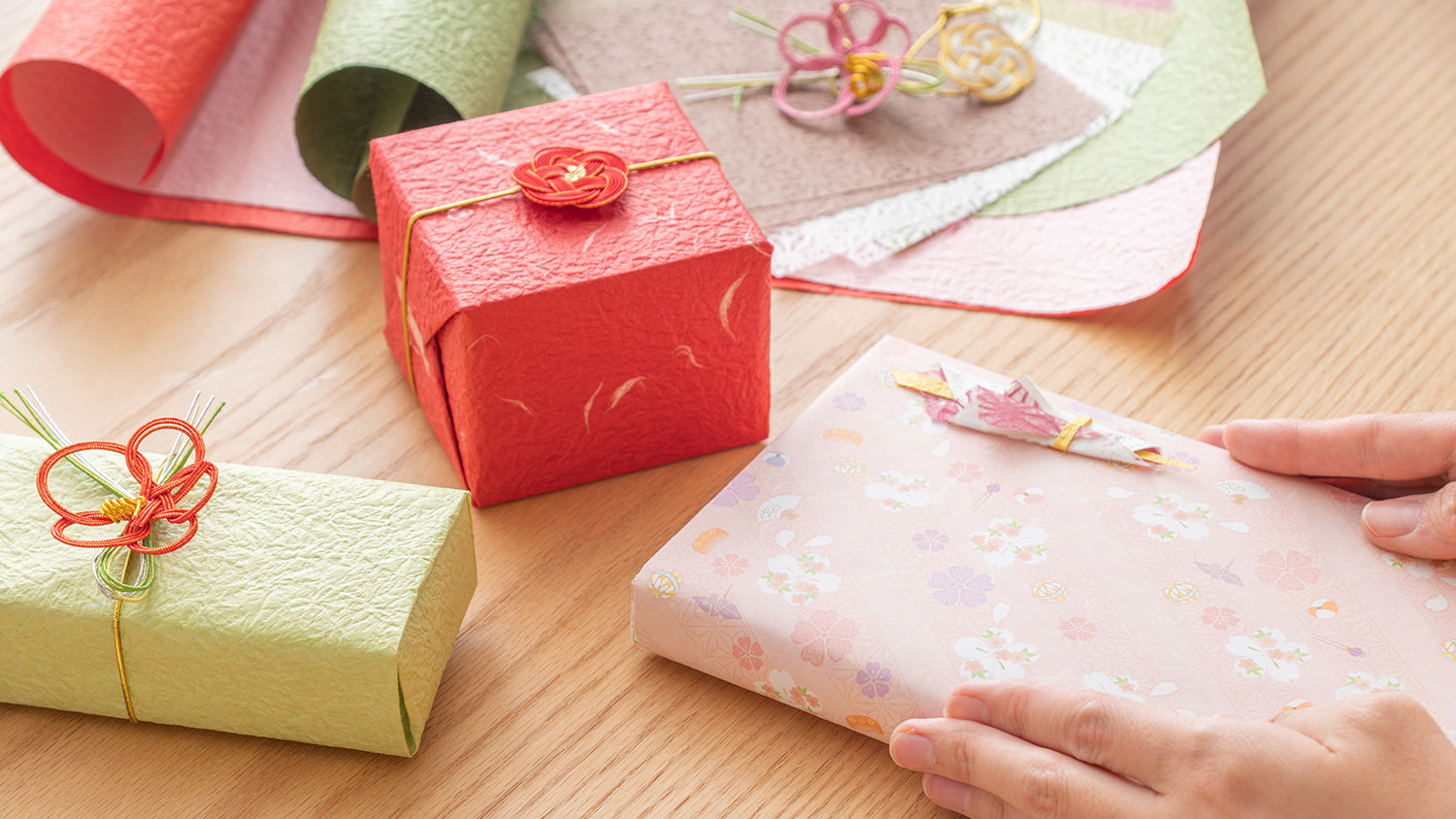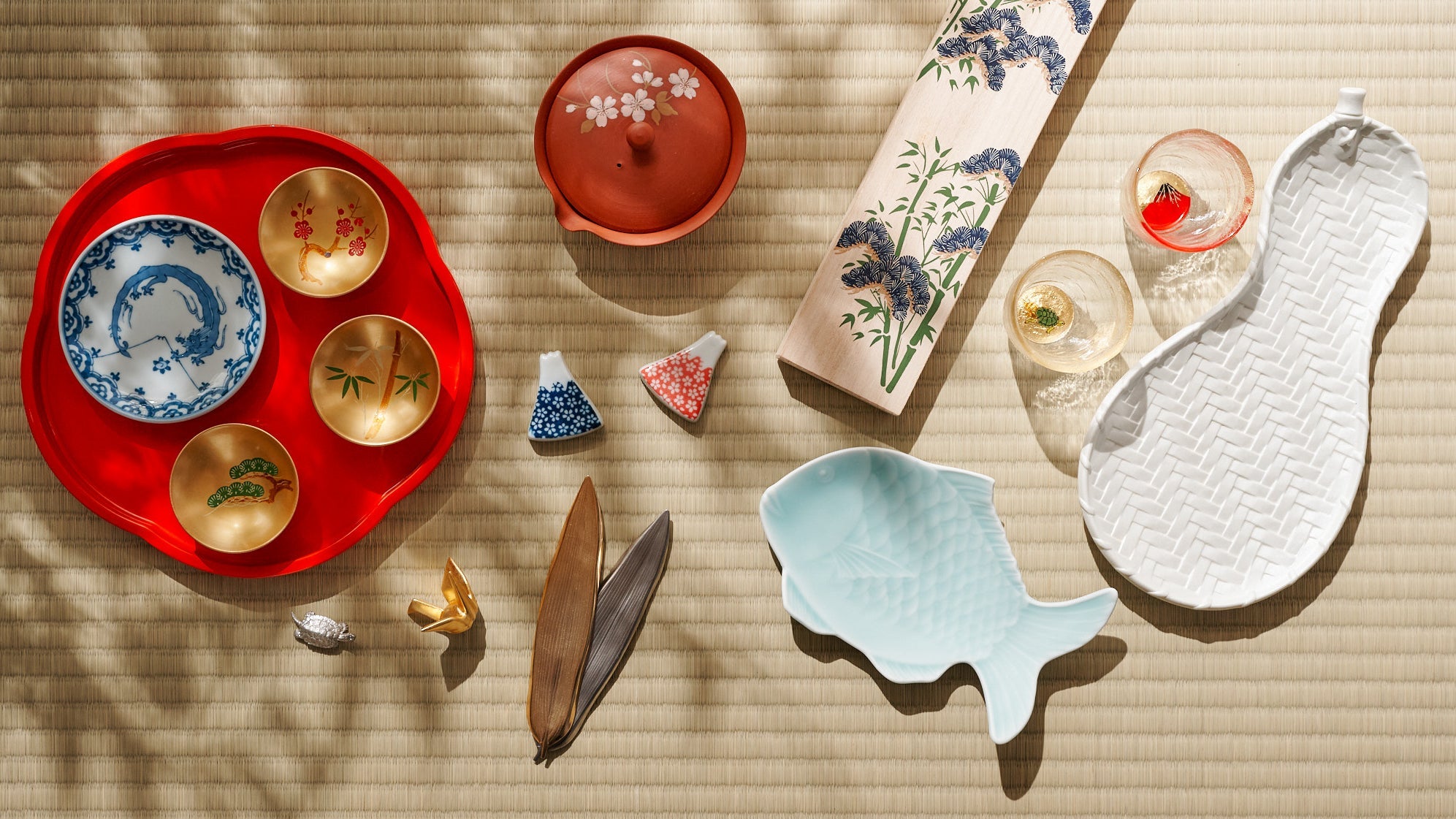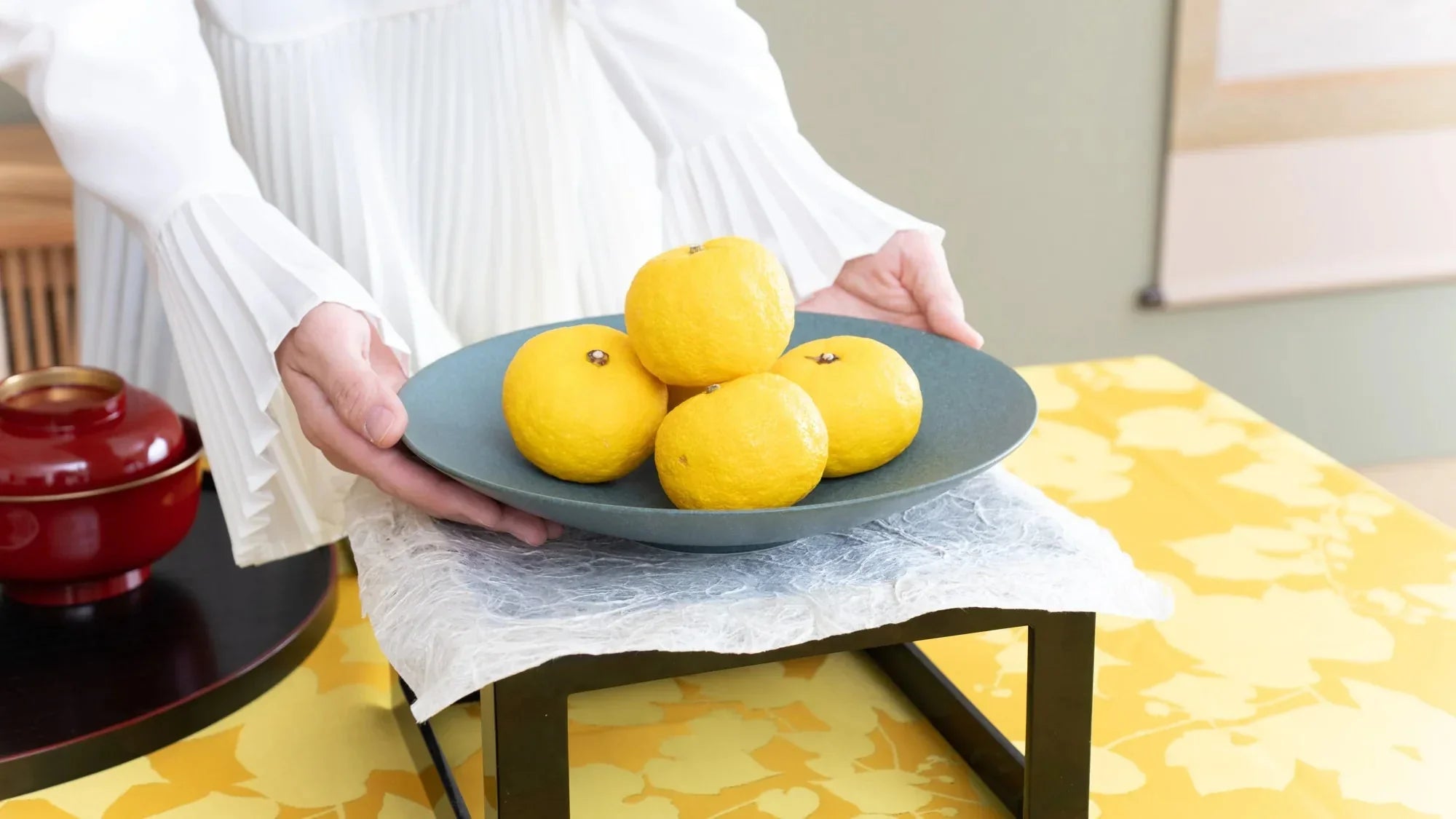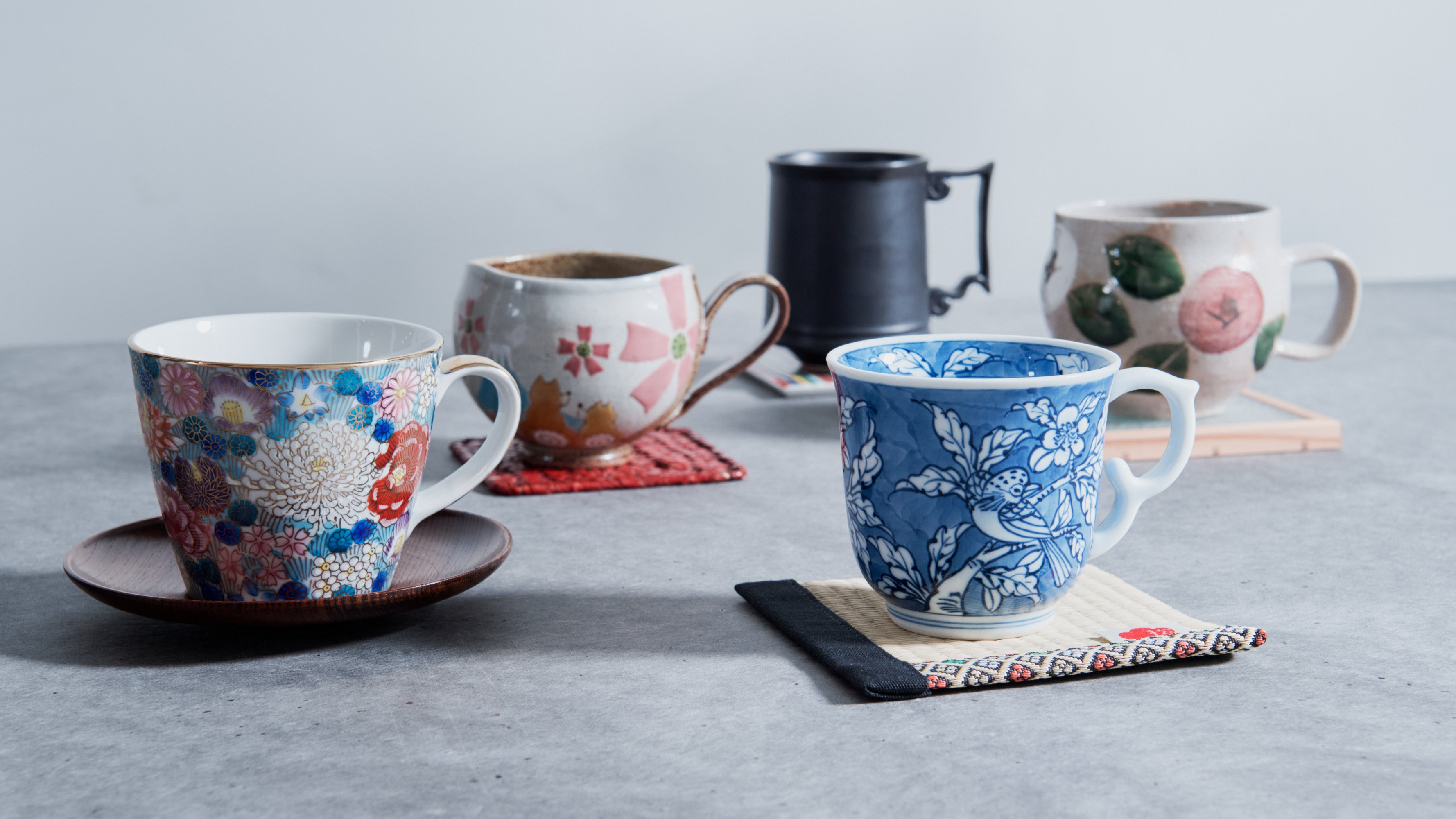
Gilded Lines and Expanding Forms: The Work of Ishitomi Shunjiro
Written by Team MUSUBI
From across the room, a shimmer of metallic light catches the eye. But it’s the intricacy beneath the surface that draws you in. Many of Ishitomi Shunjiro's works unfold in delicate black lines, built up slowly into a kaleidoscope of shapes, and then layered with glints of gold and silver hues.

His porcelain may seem about shine and decoration, but look closer, and you’ll find something more deliberate. Hand-drawn patterns expand outward, guided by rhythm and instinct. Rooted in traditional Kutani techniques, his work reinterprets them with crisp detail and modern restraint, creating pieces that bring a cool, graphic clarity to contemporary interiors. It’s Kutani ware filtered through a style that’s become entirely his own.
Table of contents
What Catches the Eye
We met Ishitomi in his home studio in Kanazawa, where natural light slipped through shoji-covered windows, casting a calm glow across the porcelain on display. His tokonoma alcove was filled with pieces from different stages of his career—cups, plates, and vases randomly placed.
On the low table before us, a group of teacups shimmered with intricate detail. Their patterns unfolded like petals or stained glass, reflecting the same designs and techniques found on his vases.

From a distance, the design looked like blooming flowers. But the closer we looked, the more it shifted—becoming something not quite floral, not entirely geometric.
“People often ask me what the image is supposed to be,” Ishitomi said, holding the piece in his hand.
“But I always tell them to see it their own way. It depends on the person. Some say fireworks. Some say Italian frescoes. I’ve even heard someone say it looks like cells under a microscope. I try not to guide the interpretation.”
When asked about the source of inspiration behind the tightly woven shapes on his ceramics, Ishitomi answered casually, “For me, it’s music. When I paint, I’m always listening to something. Mozart, punk rock, whatever’s playing. It runs constantly while I work.” His studio is in a quiet residential area, so he usually listens through earphones. “If I could, I’d blast it,” he added with a grin. “Really crank it up.”

One might assume that a particular song would spark a specific image in his work. But according to Ishitomi, that’s not the case. “I don’t draw a piece while thinking of one song or genre in particular. It’s more than I listen as I go, and the rhythm finds its way into my design.”
A Life in Porcelain
Ishitomi’s path to ceramics wasn’t planned, but looking back, it feels inevitable. “We had relatives who ran a Kutani ware wholesaler,” he recalls. “During New Year visits, I’d see these beautiful pieces. I think that stuck with me.”
After high school, he decided to pursue his interest in drawing and enrolled in the Ishikawa Prefectural Kutani Ware Technical Training Institute. Upon graduating, he began an apprenticeship at Kinzan Kiln, the workshop of Living National Treasure Yoshita Minori, who is recognized for his mastery of yuri kinsai, underglaze gold leaf. There, Ishitomi not only learned technique but also absorbed the rhythms and discipline of old-school craft training.

“It was strict,” he says. “Back then, there were still many older artisans. They didn’t go easy on you, but the skills I learned were invaluable. That kind of experience is rare now. I think I just barely caught the end of that era.”
After many years at Kinzan Kiln, Ishitomi began to work independently. “I think it’s been about four or five years now.”
He now works from a studio near his home, spending his days immersed in his practice, surrounded by shifting melodies and the lush greenery just outside his window, like something out of an animated film.
The Method Behind the Detail
Step into Ishitomi’s studio, and you’ll find not only finished works lined up by the window, but tools, papers, and half-painted pieces in quiet motion. His process is not a rigid sequence, but a continuous rhythm of adjustment and intent.

He begins with chikushi, a soft tracing paper, to mark rough guidelines for balance. Using a compass or freehand lines, he sketches a basic grid in pencil. From there, he starts painting patterns within each section, one by one. The layout isn’t fixed. Sections might be moved, cut away, or redrawn entirely depending on how the composition develops.

The painting itself is done using ultra-fine brushes, often trimmed by hand. His preferred pigment is black gosu, which is notoriously difficult to control in fine lines. “Compared to red, black doesn’t flow as smoothly,” he explains. “The pigment particles are larger, so it resists precision.” But for Ishitomi, that resistance is where the work begins to speak.

Once painted, the piece is fired. Then another layer is added, sometimes new patternwork, matte textures, sometimes gold or platinum, and the piece is fired again. “Through experience, I’ve come to know when a layer needs to be fixed before moving on,” he says. “Gold, for example, sometimes requires three separate firings.” The firing temperatures vary depending on the materials, with gold at around 600°C (1112°F) and platinum requiring slightly lower heat to maintain its shine.
There’s no rigid template. He adjusts each section as he paints, watching how the lines interact and the balance shifts. What results isn’t simply ornamentation; it’s structure, motion, and texture built by hand.

This process of drawing, firing, and refining can stretch over months. His workdays, at times, run from morning until well past midnight, a solitary stretch of hours shaped by concentration and music.
No two pieces are ever the same, not just by design, but because the process itself evolves as he paints.
Meant for the Future
Ishitomi says he wasn’t always drawn to gold.
“After working with it for over thirty years, I’ve come to appreciate its glow. Some might see it as flashy, but I like the way it shines. And I don’t think the way I use it ever feels excessive,” he explains.
These days, he feels closer than ever to creating work that reflects who he is.
“Lately, I’ve started to sense that what I picture in my mind and what comes out in the final piece—they’re starting to align. It’s taken time, but it’s rewarding.”
In addition to his signature black gosu lines and gold detailing, his pieces also feature a soft lavender-purple palette, offering a gentler impression while maintaining the same level of intricacy.
Ishitomi has found a style that feels true, one that’s unmistakably his. As his palette expands and his patterns continue to evolve, his work moves forward: measured, intentional, and entirely his own.











Leave a comment
This site is protected by hCaptcha and the hCaptcha Privacy Policy and Terms of Service apply.